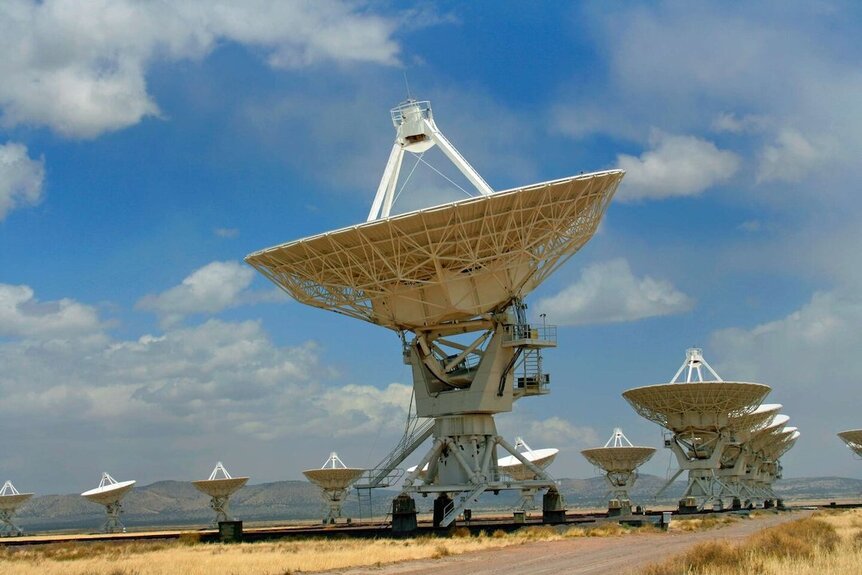Create a free profile to get unlimited access to exclusive videos, sweepstakes, and more!
Astronomers Searching for Alien Signals from the Center of the Galaxy
Is there anybody out there?

Visitation from an alien intelligence would be either the coolest or the worst thing that could happen to our species. From the moment an alien showed up on our radar, we’d be in for a world of enlightenment or a world of pain, unless that alien had a change of heart. Harry Vanderspeigle (real name unpronounceable) was supposed to eradicate all of humanity for the benefit of the rest of the planet, but he didn’t count on catching a case of human emotion. Now he’s biding his time and weighing the fate of our species on SYFY's Resident Alien, streaming now on Peacock.
If we’re lucky (or unlucky, as the case may be), aliens will show up on our doorstep. Failing that, if we really want to meet our new alien besties, we’re going to have to find them ourselves. That’s the focus of the Search for Extraterrestrial Intelligence, commonly known as SETI, and they’ve got a new strategy for hunting alien signals.
RELATED: Could Aliens Send Us Quantum Messages Across the Galaxy?
Previous searches have assumed that any intelligent alien species would utilize narrowband continuous-wave beacons to beam information across the cosmos. The search for that sort of communications technology, however, has so far turned up no hits. A new study published in The Astronomical Journal suggests those previous attempts may have been looking for the wrong things. Instead of a continuous beam, aliens might utilize a rotating beacon to send information pulses like Morse Code through space.
ALIEN COMMUNICATION BEACONS IN THE GALACTIC CORE
The team, led by Akshay Suresh, a graduate student at Cornell University, developed software called Breakthrough Listen Investigation for Periodic Spectral Signals (BLIPSS), which searches radio telescope data for periodic signals of the right kind. They tested the software on known pulsar sources to confirm it was capable of teasing out the narrow frequency data from the background radio noise. Then they set BLIPSS to work on data from the Green Bank Telescope in West Virginia, with a special focus on regions in or near the galactic core.
“Until now, radio SETI has primarily dedicated its efforts to the search for continuous signals. Our study sheds light on the remarkable energy efficiency of a train of pulses as a means of interstellar communication across vast distances. Notably, this study marks the first-ever comprehensive endeavor to conduct in-depth searches for these signals,” said SETI Institute Astronomer Dr. Vishal Gajjar, in a statement.
If alien communications structures for interstellar communication do exist, scientists are betting they’re in the galactic core. If you wanted to be able to relay information between a bunch of different places, the center of that network is a good place to be. The galactic core also has a leg up in terms of pure numbers. The core has the densest collection of stars in the galaxies. More stars means more worlds, means more opportunities for life and intelligence. By putting their focus on the galactic core, researchers believe they are maximizing their chances of finding evidence of alien technology in our galaxy. If we do pick up a signal, here’s hoping it’s a friendly one.
Seasons 1 and 2 of Resident Alien are streaming now on Peacock! Season 3 has already wrapped production and is expected to visit us soon.































